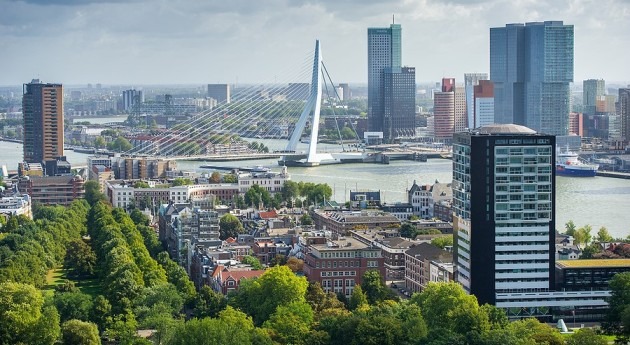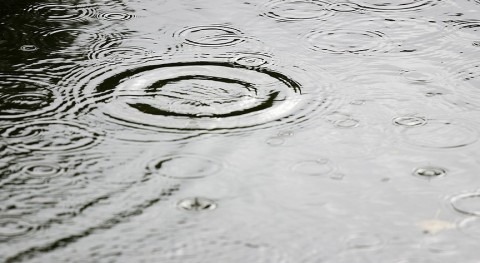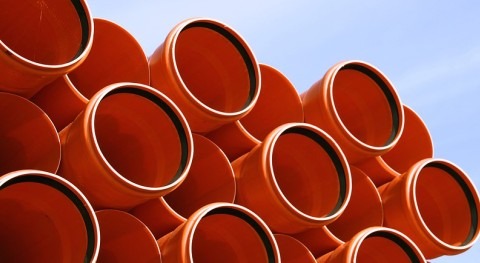More than two-thirds of the biggest and most densely populated cities in the world are coastal delta cities, or find themselves perched precariously along estuaries, making them particularly vulnerable to rising sea levels.
The city of Rotterdam is one such destination, with almost 80 per cent of the metropolis below sea level. As such, it’s particularly vulnerable to the effects of global warming, with changes in sea levels, river drainage issues and rainfall intensity all having an impact on the way of life here.
But what’s particularly interesting to note is that the city certainly isn’t resting on its laurels and water management practices have been taking centre stage for quite some time now, spurred on by the devastating North Sea flood in 1953.
These new modern flood management approaches have seen so much success that its various solutions to a complicated problem are now being adopted elsewhere around the world.
Rotterdam in action
Work done by the Water Sensitive Rotterdam project (alongside other programmes such as the Rotterdam Adaptation Strategy, the Climate Proof Programme and the Resilience Programme) is very much in evidence throughout the city, with alternative forms of water storage, water squares, paving removal, rooftop parks, green roofs and so on all helping to make the urban landscape more resilient.
In Groenewegplein, for example, local residents and project organisers came together to transform the square from a stony piece of land to one with greenery at its heart, ensuring that rainwater can drain properly or be collected for storage in green water facilities.
And on Henegouwerplein, the city’s very first impluvium was installed to help tackle the water problem. This structure features an open roof shaped like a funnel, with a water basin in the middle and, in fact, it was how the Romans themselves harvested rainwater for reuse.
Alternatively, make your way to the Middelland district and Robert Fruinstraat and you’ll find the first example of a Bosch Slabbers/Water Sensitive Rotterdam initiative to design the street of the future, with the aim being to turn every street in the Netherlands into a StraaD.
Here, the idea is that the city streets can serve as a kind of sponge, creating water storage facilities in both the public and private domain, coupled with infiltration into the subsurface through the street.
StraaDs will also be characterised by a significant level of greenery, delivering on aesthetics of course but also providing cooling effects, improving infiltration and helping to purify both air and water, as well as potentially allowing for small-scale food production.
Efficiency is also the name of the game, with smart linking between energy, waste, cables and pipes helping to create potentially self-sufficient city streets. And, finally, the aim is to create a more pleasant living environment through the use of sustainable high-quality materials.
The Rotterdams WeerWoord is also putting plans in place to ensure the city is fully prepared for the impacts of climate change now and well into the future, addressing the themes of heat, drought, precipitation, groundwater, flooding and subsidence.
The goal is to develop a climate-proof city by the year 2030, striving to ensure that all urban planning takes climate change into account so that each part of the city will face minimal disruption, while allowing for contingencies, with the focus very much on adaptive measures and building with nature in mind.
Its multi-layered flood protection strategies involve the likes of flood-proof buildings and public areas, and floating communities, as well as the optimising of storm surge barriers and reinforcing of dikes to make them multifunctional, serving as routes for recreation and natural embankments, while forming part of new development projects.
Global influence
Over the years, Rotterdam has become renowned for its flood protection and water management approaches, which is no doubt why city mayor Ahmed Aboutaleb took centre stage at the COP28 climate conference in Dubai earlier this month (December).
Speaking to EuroNews, Mr Aboutaleb explained that international knowledge exchange is incredibly valuable, ensuring that Rotterdam is able to adapt and invest in order to survive in the face of climate change.
At the climate conference, collaborations were struck with the Dutch Ministry of Infrastructure and Water, and the head of the Environment Authority of Fujairah to discuss important topics such as urban climate resilience, transforming the Dutch city into a hydrogen hub and how to improve fire safety at ports.
And, of course, there are economic benefits for Rotterdam positioning itself as a water expert, with Mr Aboutaleb saying: “Rotterdam’s international policy framework focuses on trade and investment promotion. Given these policy goals, the city seeks to collaborate with businesses and knowledge institutes in its international activities, also in the water sector.”
Because the city’s climate change solutions also serve to both protect and promote it, Dutch engineering companies are making a serious name for themselves on the world stage.
For example, Ho Chi Minh City in Vietnam developed its first climate adaptation strategy with support and guidance from Rotterdam, allowing it to initiate its own public-private partnership on flood protection.
And in 2018, the Netherlands went on an economic mission to Vietnam and Malaysia, focusing on water management and building resilience. The accompanying brochure described the Netherlands as having the “best water transport infrastructure in the world”, with some 40 companies or so joining the mission.
The most notable knowledge exchange, however, is the C40 cities network, with almost 100 cities coming together to share best practices for emission reduction and protecting communities from the impacts of climate change.
Mayors of C40 cities commit to use inclusive, science-based and collaborative approaches to slashing emissions in half by 2030, limiting global warming to 1.5 degrees C and building healthy and resilient communities through international advocacy and diplomacy, fostering innovation, scaling up climate action and facilitating access to finance.
In November, the C40 group established the Water Safe Cities Accelerator, with 16 cities (including Rotterdam, of course!), pledging to protect the most vulnerable communities from drought and flooding by 2027 through the use of emergency response plans and early warning systems.








